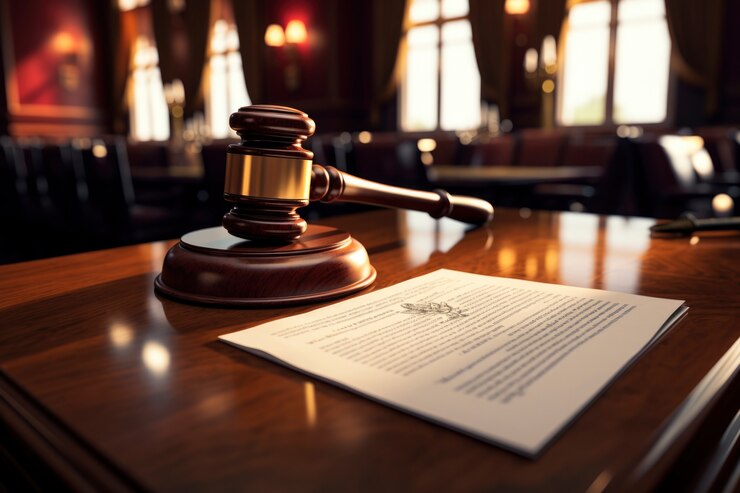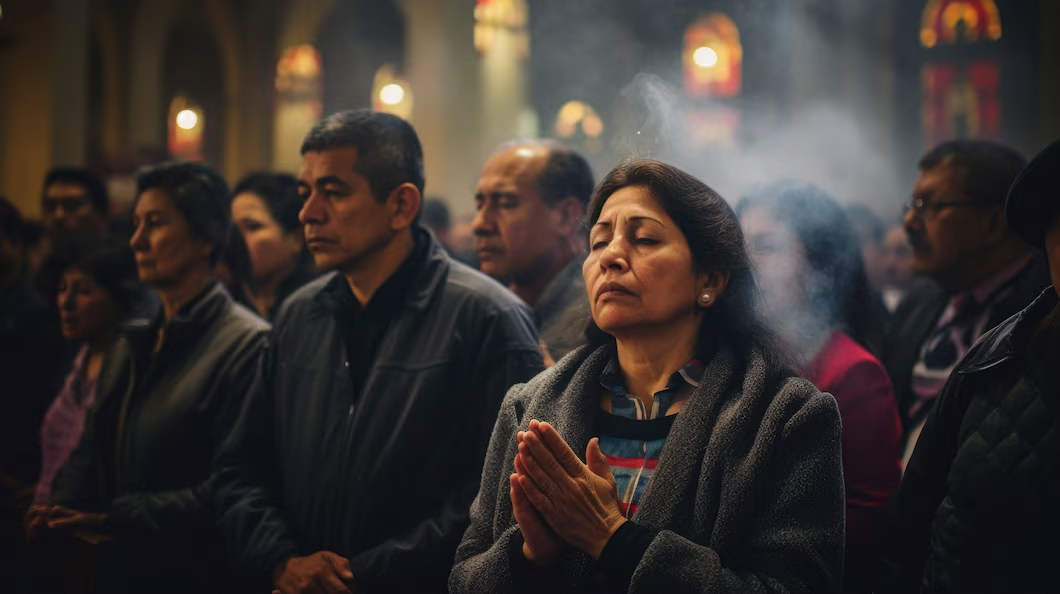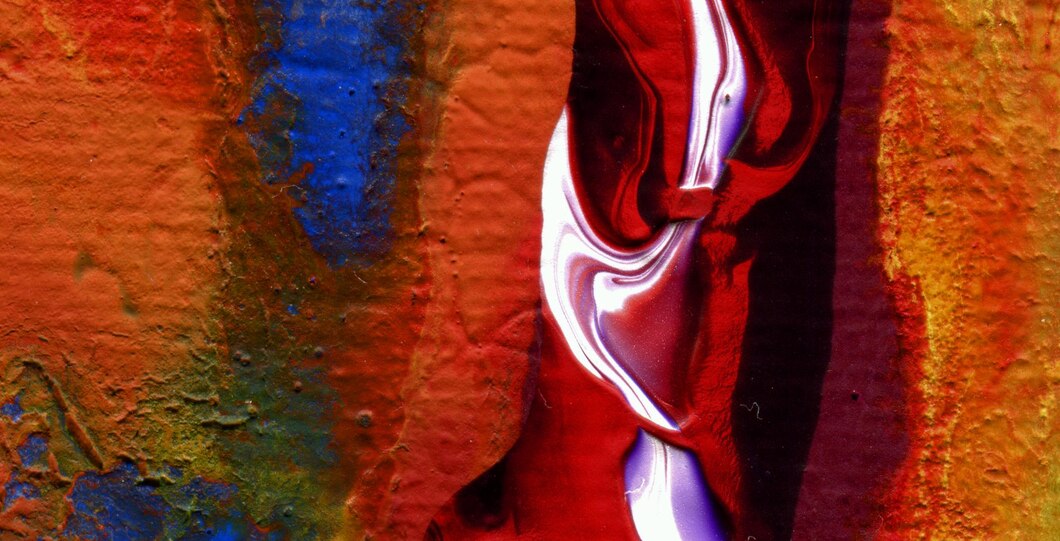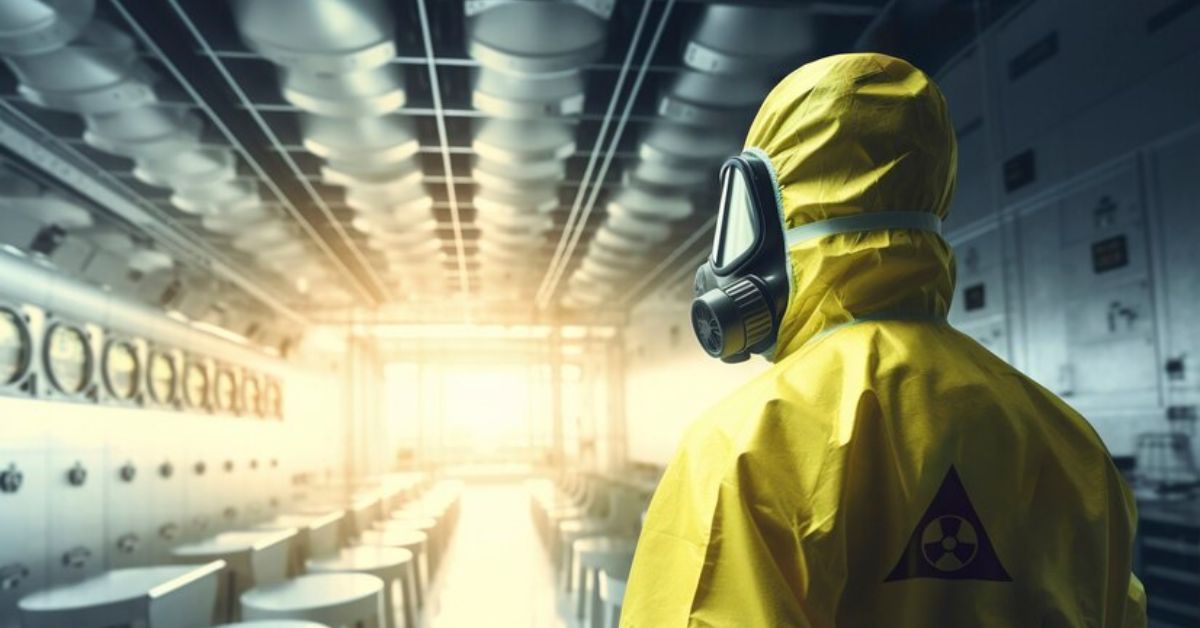Topic
Everything You Need to Know About Bail Bonds Near Me

Looking for bail bonds near you? Understanding the ins and outs of the bail bond process can be crucial during challenging times. Whether it’s for yourself or a loved one, knowing how to navigate the world of bail bonds is essential. In this comprehensive guide, we’ll break down everything you need to know about bail bonds, including what they are, how they work, when to seek out a bail bondsman, and where to find reputable services near you. Let’s dive in!
Understanding Bail Bonds
Bail bonds serve as a form of financial guarantee to ensure the defendant’s appearance in court. When someone is arrested, they have the option to post bail to secure their release until their trial date. However, not everyone can afford to pay the full bail amount upfront. This is where bail bonds come into play.
A bail bond is a contract between the defendant, a co-signer (often a friend or family member), and a bail bond agent. The agent agrees to cover the full bail amount if the defendant fails to appear in court as required. In exchange for this service, the co-signer typically pays a non-refundable fee, usually around 10% of the total bail amount.
Understanding how bail bonds work can be crucial when facing legal issues. By working with a reputable bail bond company, you can navigate the process more smoothly and secure your freedom while awaiting trial.
What is Bail?
When someone is arrested, they may be required to post bail in order to secure their release until their court date. Bail serves as a financial guarantee that the defendant will appear in court as scheduled. The amount of bail is set by the judge based on various factors such as the severity of the crime and the defendant’s flight risk.
Bail can be paid in full by the defendant or a loved one, or through a bail bond provided by a bail bondsman. A bail bond is a surety bond that guarantees payment of the full bail amount if the defendant fails to appear in court.
Understanding how bail works is crucial for those facing legal issues. It gives individuals an opportunity to await trial outside of jail while ensuring they fulfill their legal obligations.
How a Bail Bond Works
When someone is arrested and unable to afford the full bail amount set by the court, a bail bond comes into play. Essentially, a bail bond is a contract between the defendant or their loved ones and a bail bondsman. The bondsman agrees to pay the full bail amount if the defendant fails to appear in court as required.
To obtain a bail bond, typically 10% of the total bail amount must be paid to the bondsman. This fee is non-refundable and serves as compensation for taking on the risk of paying the full bail if needed. Once this fee is paid, the bondsman will post the remaining amount with the court so that the defendant can be released from custody.
If you find yourself in need of a bail bond, it’s crucial to understand how this process works and what your responsibilities are as part of this agreement. By working with a reputable and trustworthy bondsman, you can navigate this challenging time with confidence and peace of mind.
When Do I Need A Bail Bondsman?
Facing a situation where you or a loved one has been arrested can be overwhelming and stressful. When the court sets a bail amount that is beyond your financial means, this is when you may need to seek the help of a bail bondsman.
Bail bondsmen are professionals who provide assistance in posting bail for individuals who cannot afford to pay the full amount set by the court. They act as sureties, ensuring that the defendant appears in court for their scheduled hearings.
Whether it’s due to unexpected circumstances or financial constraints, using a bail bondsman can help expedite the release process and get you or your loved one out of jail faster. By paying only a fraction of the total bail amount as a fee, you can secure the release while still fulfilling your legal obligations.
Keep in mind that utilizing a bail bondsman is not always necessary, but it can be extremely beneficial when facing hefty bail amounts that are difficult to cover on your own.
Finding a Bail Bondsman
When faced with the need for bail, finding a trustworthy bail bondsman is crucial. A bail bondsman acts as a surety and guarantees the court that the defendant will appear for their scheduled court dates.
Start by asking for recommendations from friends or family members who have had experience with bail bond services. Their firsthand knowledge can be invaluable in finding a reputable bondsman.
You can also research online for local bail bond agencies near your location. Reading reviews and testimonials can give you insight into others’ experiences with different companies.
Make sure to verify that the bail bondsman is licensed and registered in your state. This ensures they are operating legally and ethically within the industry.
Contact multiple bail bondsmen to compare rates, payment plans, and overall customer service. It’s important to feel comfortable and confident in your choice of bondsman during this stressful time.
How to Find Bail Bonds Near Me
When you or a loved one find yourselves in a situation requiring bail, finding a reliable bail bondsman nearby is crucial. The process of searching for “bail bonds near me” can be overwhelming, but there are steps you can take to simplify the search.
Start by asking for recommendations from friends or family members who have experience with bail bonds services. They may be able to point you in the direction of trustworthy professionals they have worked with before.
Another way to find bail bonds near you is by conducting an online search. Utilize search engines and directories to locate local bail bond companies in your area. Be sure to read reviews and check their credentials before making a decision.
Additionally, reaching out to attorneys or legal professionals for referrals can lead you to reputable bail bond agents in your vicinity. Remember that time is often of the essence when it comes to posting bail, so act promptly once you’ve found a suitable option.
By following these steps and doing thorough research, you can effectively find reliable bail bonds near your location when needed most.
Tips for Finding a Trustworthy Bail Bondsman
Looking for a trustworthy bail bondsman can be a crucial decision during a challenging time. To ensure you are working with someone reliable, start by doing your research. Look for bail bondsmen who have positive reviews and a good reputation in the community.
It’s essential to check if the bail bondsman is licensed and regulated by the state. This accreditation ensures they operate within legal boundaries and adhere to industry standards. Additionally, ask about their experience in handling similar cases and inquire about their success rate.
When speaking to potential bail bondsmen, pay attention to how they communicate with you. A trustworthy professional will be transparent about their fees, terms, and expectations from the beginning. Avoid bondsmen who pressure you or make unrealistic promises.
Trust your instincts when choosing a bail bondsman. If something feels off or too good to be true, it’s better to continue your search until you find someone you feel comfortable working with throughout the process.
Where to Find Bail Bonds Near Me
When you find yourself in a situation requiring bail bonds, knowing where to turn for help is crucial. So, where can you find bail bonds near you? One of the most convenient sources is the internet. Simply searching online for “bail bonds near me” can provide you with a list of local bail bond companies ready to assist.
Another option is to ask for recommendations from friends or family who may have been in similar situations before. They might be able to point you towards reputable bail bond services in your area.
Local law enforcement offices and courthouse facilities often have directories or information on trusted bail bond agencies nearby. Visiting these locations could also lead you to reliable options for securing a bail bond quickly and efficiently.
Don’t hesitate to reach out directly to different bail bond companies through phone calls or emails. This direct approach allows you to inquire about their services, fees, and availability so that you can make an informed decision when choosing a provider.
The Bail Bond Process
The bail bond process can be complex, but understanding the steps involved is crucial. Once someone is arrested and a bail amount is set by the court, they have the option to post bail in full or seek help from a bail bondsman.
When opting for a bail bond, the defendant or their loved ones typically pay a percentage of the total bail amount to the bondsman. The bondsman then posts the full bail on behalf of the defendant, ensuring their release from custody.
Once released, it’s important for the defendant to adhere to all court dates and conditions set forth by the judge. Failure to comply can result in serious consequences and potential forfeiture of the bond.
Navigating through the bail bond process requires attention to detail and prompt action. It’s essential to work with a reputable bondsman who can guide you through each step seamlessly.
Step-by-Step Guide to the Bail Process
Once you or a loved one has been arrested, the bail process can seem overwhelming. Understanding the step-by-step guide to the bail process can help navigate this stressful situation.
The first step is the arrest, where law enforcement takes an individual into custody and sets a bail amount. Next, contact a reputable bail bondsman who will assist in posting bail for a fee typically around 10% of the total bond amount.
After contacting the bondsman, they will collect necessary information and payment before posting the bond with the court. Once released, it’s crucial to attend all scheduled court dates to avoid forfeiting the bond.
If all court appearances are attended and legal obligations met, once the case concludes, any collateral provided should be returned by the bail bondsman. Understanding each step of this process ensures a smoother experience during challenging times.
Conclusion
Understanding the ins and outs of bail bonds can make a stressful situation more manageable. Knowing what bail is, how the process works, when to seek a bail bondsman, and where to find one are all crucial aspects to navigate successfully. By following the tips for finding a trustworthy bail bondsman and being aware of the step-by-step guide to the bail process, you can ensure a smoother experience during challenging times. Remember that you are not alone in this process, and there are professionals ready to assist you every step of the way. Stay informed, stay prepared, and remember that help is always within reach with bail bonds near you.
Topic
Quakerism: A Religion or a Cult

Introduction to Quakerism
Quakerism often invites curiosity and confusion. Is it a religion, a cult, or something entirely different? With its unique practices and rich history, Quakerism stands apart from many other faith traditions. Imagine gathering in silence to seek inner peace and divine guidance instead of following elaborate rituals or sermons. This blog will dive into the world of Quakers—exploring their beliefs, historical roots, and the controversies that sometimes cloud their reputation. Join us on this journey to uncover what makes Quakerism both distinctive and deeply meaningful for those who practice it.
History of Quakerism and its Founders
Quakerism emerged in the mid-17th century during a time of religious upheaval in England. Founded by George Fox, it arose as a response to established churches and their rigid doctrines. Fox sought a direct experience of God, unmediated by clergy.
The early Quakers emphasized inner light, believing that everyone could access divine truth within themselves. This belief set them apart from more traditional Christian denominations. They faced persecution for their views, leading to imprisonments and public outcry.
Alongside Fox, figures like Margaret Fell played pivotal roles in shaping the movement’s direction. Fell was instrumental in promoting gender equality within the faith and advocating for social justice issues.
As Quakerism spread across continents—particularly to North America—it adapted and evolved while remaining rooted in its core principles of simplicity, peace, integrity, community, and equality.
Beliefs and Practices of Quakers
Quakers, or the Religious Society of Friends, embrace a unique set of beliefs centered on simplicity and integrity. They hold that every person possesses an inner light—divine guidance residing within.
Worship for Quakers often takes place in silence. Meetings are contemplative, allowing individuals to connect with their inner selves and listen for spiritual direction. This practice promotes communal sharing when someone feels moved to speak.
Quaker values extend beyond worship into daily life. Social justice is paramount; many actively engage in peace movements and humanitarian efforts worldwide. Their commitment to equality drives them to advocate for marginalized communities.
Decisions are typically made through consensus rather than voting, reflecting their belief in collective wisdom and respect for each voice present. This democratic approach fosters unity while honoring individual insights within the group dynamic, creating a supportive community atmosphere where faith can flourish naturally.
Similarities and Differences between Quakerism and other Religions
Quakerism shares common ground with various religious traditions. Like many faiths, it emphasizes compassion, social justice, and the importance of community. This focus on service resonates deeply across Christianity, Buddhism, and Islam.
However, Quaker beliefs diverge significantly in practice. Unlike more hierarchical religions, Quakers reject formal clergy. They value individual experience over dogma or outward rituals. Silent worship is a defining characteristic that sets them apart from congregational practices seen in other faiths.
In terms of spirituality, Quakers embrace direct communion with the Divine without intermediaries. This contrasts sharply with religions that emphasize sacraments or specific rites of passage as essential to spiritual growth.
While they may share fundamental values like love and peace with other denominations, the approach to understanding God remains uniquely personal within Quakerism. The emphasis on inner light fosters an environment where personal interpretation flourishes rather than adhering strictly to prescribed doctrines.
Controversies surrounding Quakerism and accusations of it being a cult
Quakerism often finds itself at the center of controversy. Critics sometimes label it a cult due to its non-traditional structure and lack of formal clergy. This perspective stems from misunderstandings about how Quakers practice their faith.
The emphasis on personal revelation can be unsettling for those accustomed to hierarchical religious frameworks. Many people are wary when a group encourages individuals to seek direct experiences with the divine, away from established dogmas.
Additionally, some ex-members have shared negative experiences, which fuel these accusations. Their stories highlight issues like social pressure or emotional manipulation that may occur in any close-knit community.
Yet, many current Quakers reject this labeling altogether. They emphasize their commitment to peace, equality, and simplicity as core tenets that embody love rather than coercion or control. The dialogue around these controversies continues to evolve within both the wider society and among believers themselves.
Personal testimonies from Quakers about their faith
Quakers often describe their faith as a profound personal experience. Many emphasize the inner light that guides them through life’s challenges. This spiritual connection fosters a sense of peace and community.
One Quaker shared how attending silent meetings has transformed her understanding of prayer. Instead of spoken words, she finds power in stillness, allowing thoughts to flow freely without interruption.
Another spoke about the importance of social justice within Quaker teachings. He felt compelled to act when witnessing inequality, motivated by his belief in every person’s inherent worth.
These testimonies highlight a diverse range of experiences rooted in similar principles. The emphasis on direct communion with God shapes each individual’s journey uniquely, creating an inclusive space for personal exploration and communal growth.
Conclusion: Understanding the true nature of Quakerism
Quakerism stands apart with its unique approach to spirituality. It’s a faith grounded in simplicity, peace, and equality.
Many Quakers find their strength through personal experiences rather than rigid doctrines. This creates a dynamic community where individuals explore their relationship with the Divine.
The misconceptions surrounding Quakerism often stem from misunderstandings about its practices and beliefs. Critics may label it as a cult due to its unconventional structure and deep commitment to social justice.
Yet, at its core, Quakerism emphasizes inner light and personal revelation. It encourages followers to seek truth within themselves while fostering communal support.
Personal testimonies shed light on the profound impact of this faith on individual lives—a journey marked by introspection, compassion, and purposefulness that transcends traditional religious boundaries.
FAQs
- What are the core beliefs of Quakers?
Quakers emphasize simplicity, peace, integrity, community, and equality. They believe in the “Inner Light,” which reflects God’s spirit within everyone. - Do Quakers have a formal church structure?
No. Quaker meetings are often informal gatherings without hierarchical leadership. Decisions are made collectively through consensus. - Are all Quakers pacifists?
While many Quakers advocate for peace and non-violence, there can be variations in individual beliefs regarding conflict and military service. - How do Quakers worship?
Worship can vary widely among different groups but often includes silent reflection or prayer. Some meetings may include spoken ministry as led by participants inspired by their Inner Light. - Can anyone become a Quaker?
Yes! People from diverse backgrounds can join the faith as long as they resonate with its principles and values. - Is there an official set of texts like other religions?
Unlike many religions, there isn’t a single holy book for all quakers; instead, various writings from early founders such as George Fox guide their practices alongside personal experience. - What distinguishes modern-day quaking from historical practices?
Today’s practice has evolved to embrace social justice issues more actively while retaining core spiritual tenets established centuries ago.
Understanding these aspects sheds light on what makes Quakerism both distinct yet approachable for those seeking deeper meaning in life’s journey. The dialogue surrounding its classification—whether it’s seen as religion or cult—reveals more about societal perceptions than it does about the faith itself.
Topic
Fabrice Moello: A Visionary in Modern Art

Introduction
Fabrice Moello is a name that resonates deeply within the contemporary art world. Known for his unique style and profound influence, Moello has carved a niche for himself as a visionary artist. His work, characterized by its innovative approach and emotional depth, has garnered international acclaim and continues to inspire both critics and art enthusiasts alike.
Early Life and Background
Fabrice Moello was born into a family that cherished creativity and artistic expression. Growing up, he was surrounded by a rich tapestry of art and culture, which profoundly influenced his early interest in the arts. As a child, Moello spent countless hours sketching and painting, showing a natural talent that would later define his career.
Education and Training
Moello’s formal education in art began at a prestigious art school, where he honed his skills and developed his unique style. His education was not limited to traditional techniques; he was deeply influenced by modernist movements and avant-garde artists, which broadened his perspective and enriched his creative vision. Mentored by renowned artists, Moello’s training provided him with the foundation needed to embark on a successful artistic journey.
Artistic Style and Influences
Fabrice Moello’s artistic style is a blend of abstract expressionism and contemporary realism. His works often feature bold colors, dynamic compositions, and a remarkable interplay of light and shadow. Influenced by the likes of Picasso, Rothko, and Basquiat, Moello’s art reflects a deep understanding of human emotions and experiences, making his pieces both thought-provoking and visually captivating.
Major Works and Achievements
Throughout his career, Moello has created numerous masterpieces that have left an indelible mark on the art world. Some of his most notable works include “Eternal Dance,” “Fragments of Reality,” and “Whispers of Time.” These pieces have not only received critical acclaim but have also earned him several prestigious awards, solidifying his status as a leading contemporary artist.
Exhibitions and Shows
Moello’s art has been showcased in numerous exhibitions and shows around the world. His solo exhibitions have drawn large crowds, with art lovers eager to experience his work firsthand. Noteworthy exhibitions include his retrospectives at the MoMA in New York, the Tate Modern in London, and the Centre Pompidou in Paris. His international shows have further expanded his reach, allowing his art to touch a global audience.
Impact on Contemporary Art
Fabrice Moello’s impact on contemporary art cannot be overstated. His innovative techniques and profound themes have influenced a new generation of artists. Moello’s ability to convey complex emotions and narratives through his work has set a new standard in modern art, inspiring countless artists to explore new creative avenues.
Collaborations and Projects
Over the years, Moello has collaborated with various artists and institutions, resulting in groundbreaking projects that push the boundaries of traditional art. One of his notable collaborations was with the fashion house Dior, where he designed a series of exclusive prints for their haute couture collection. These projects not only showcase his versatility but also his ability to blend art with other creative fields seamlessly.
Philosophy and Inspiration
At the core of Moello’s work lies a deep philosophical understanding of life and art. He believes that art should evoke emotion and provoke thought. His inspiration comes from a myriad of sources, including nature, human interactions, and personal experiences. This philosophy is evident in his work, which often explores themes of existence, identity, and the human condition.
Techniques and Mediums
Fabrice Moello is known for his experimental approach to art. He employs a variety of techniques, from traditional oil painting to digital media. His ability to master different mediums allows him to continuously evolve his style and produce work that is both innovative and timeless.
Critics and Reviews
Moello’s work has been met with widespread acclaim from critics and art enthusiasts. Renowned art critic John Berger described his work as “a vivid exploration of the human psyche,” while others have praised his ability to convey deep emotional truths through his art. These positive reviews have cemented his reputation as a leading figure in contemporary art.
Personal Life
Beyond his professional achievements, Fabrice Moello leads a rich personal life. He is a dedicated family man and an avid supporter of various charitable causes. His philanthropic efforts include supporting art education programs and funding initiatives that provide resources to aspiring artists.
Challenges and Controversies
Like many artists, Moello has faced his share of challenges and controversies. From navigating the competitive art market to dealing with criticism, he has overcome numerous obstacles. However, his resilience and unwavering commitment to his craft have allowed him to turn these challenges into opportunities for growth and innovation.
Future Endeavors
Looking ahead, Fabrice Moello has several exciting projects in the pipeline. He plans to continue exploring new artistic techniques and expanding his creative horizons. His future goals include organizing more international exhibitions and collaborating with other artists to create groundbreaking work that challenges conventional norms.
Conclusion
Fabrice Moello journey as an artist is a testament to his talent, dedication, and visionary approach to art. His work continues to inspire and influence the contemporary art scene, making him a true icon in the field. As he moves forward, there is no doubt that Moello will continue to leave an indelible mark on the art world, captivating audiences with his innovative and emotionally resonant creations.
FAQs
- What is Fabrice Moello known for?
Fabrice Moello is known for his unique blend of abstract expressionism and contemporary realism, as well as his innovative techniques and emotionally charged artworks. - What are some of Fabrice Moello’s most famous works?
Some of Fabrice Moello’s most famous works include “Eternal Dance,” “Fragments of Reality,” and “Whispers of Time.” - How has Fabrice Moello influenced modern art?
Moello has influenced modern art through his innovative techniques, profound themes, and ability to convey complex emotions, setting new standards and inspiring a new generation of artists. - FAQ 4: Where can I see Fabrice Moello’s art?
Fabrice Moello’s art can be seen in major galleries and museums worldwide, including the MoMA in New York, the Tate Modern in London, and the Centre Pompidou in Paris. - What are Fabrice Moello’s future plans?
Moello plans to continue exploring new artistic techniques, organizing international exhibitions, and collaborating with other artists to create groundbreaking work.
Topic
Biohazard Cleanup: Ensuring Safety and Compliance

Biohazard cleanup is a critical process that involves the removal and decontamination of hazardous materials to ensure safety and compliance with health regulations. Biohazard situations can arise from various incidents, including crime scenes, accidents, chemical spills, and infectious disease outbreaks. Proper handling and disposal of biohazardous materials are essential to protect human health and the environment. This comprehensive guide provides an overview of biohazard cleanup, types of biohazard situations, health and safety protocols, and the importance of professional cleanup services.
In the event of an unforeseen biohazard incident, having access to a reliable and prompt service is essential. A 24/7 Emergency Restoration St. George team ensures that all biohazard situations are addressed swiftly, providing peace of mind and comprehensive cleanup services around the clock.
Types of Biohazard Situations
Biohazardous materials can pose significant risks if not handled correctly. Various situations can create biohazard conditions, requiring specialized cleanup procedures. Here are some common types of biohazard scenarios:
1. Crime Scenes and Trauma
Crime scenes and trauma incidents, such as homicides, suicides, and accidents, often involve blood, bodily fluids, and other biological materials. These materials can carry pathogens that pose health risks to anyone who comes into contact with them.
2. Hoarding Situations
Hoarding can create environments filled with hazardous materials, including mold, bacteria, and decaying organic matter. The accumulation of items and waste can lead to infestations of rodents and insects, further complicating the cleanup process.
3. Chemical Spills
Chemical spills, whether industrial or residential, can involve hazardous substances that are toxic, corrosive, or flammable. Proper containment and neutralization are necessary to prevent environmental contamination and health risks.
4. Infectious Disease Outbreaks
Outbreaks of infectious diseases, such as COVID-19, Ebola, and hepatitis, require thorough decontamination to prevent the spread of pathogens. Cleanup involves disinfecting surfaces, equipment, and air systems to eliminate the risk of transmission.
5. Sewage Backups
Sewage backups can introduce harmful bacteria, viruses, and parasites into the environment. These pathogens can cause severe illnesses if not properly managed and cleaned up.
6. Animal Infestations
Animal infestations, including rodents, birds, and insects, can create biohazard conditions through droppings, urine, and carcasses. These materials can carry diseases and pose health risks to humans.
Health and Safety Protocols
Biohazard cleanup requires strict adherence to health and safety protocols to protect workers and the public. The following steps outline the essential protocols involved in biohazard cleanup:
Personal Protective Equipment (PPE)
Workers must wear appropriate PPE to protect themselves from exposure to hazardous materials. PPE typically includes:
- Gloves: To prevent direct contact with biohazardous materials.
- Masks and Respirators: To protect against inhalation of harmful particles and pathogens.
- Goggles and Face Shields: To protect the eyes and face from splashes and airborne contaminants.
- Protective Suits: To prevent contamination of clothing and skin.
Containment and Isolation
The affected area must be contained and isolated to prevent the spread of biohazardous materials. This involves:
- Setting Up Barriers: Using plastic sheeting and other materials to create physical barriers.
- Establishing Negative Pressure: Using air filtration systems to maintain negative pressure and prevent contaminants from escaping the containment area.
- Controlling Access: Limiting access to authorized personnel only.
Safe Handling and Disposal
Proper handling and disposal of biohazardous materials are crucial for safety and compliance. This includes:
- Collecting and Containing: Using appropriate containers and bags for collecting and containing biohazardous materials.
- Labeling: Clearly labeling containers with biohazard symbols and relevant information.
- Transporting: Following regulations for transporting biohazardous waste to disposal facilities.
- Disposing: Using licensed disposal facilities for the safe destruction of biohazardous materials.
Decontamination and Disinfection
Decontamination and disinfection are essential to eliminate pathogens and ensure a safe environment. This involves:
- Cleaning: Removing visible debris and organic matter from surfaces.
- Disinfecting: Using EPA-approved disinfectants to kill pathogens on surfaces.
- Testing: Conducting tests to verify the effectiveness of the decontamination process.
Training and Certification
Biohazard cleanup workers must undergo specialized training and certification to handle hazardous materials safely. Training covers:
- Hazard Recognition: Identifying different types of biohazardous materials and their risks.
- Safe Practices: Learning safe handling, containment, and disposal procedures.
- Emergency Response: Preparing for potential emergencies and knowing how to respond effectively.
Importance of Professional Cleanup Services
Engaging professional biohazard cleanup services is crucial for ensuring thorough and compliant remediation. Here are some reasons why professional services are essential:
Expertise and Experience
Professional cleanup companies have the expertise and experience to handle a wide range of biohazard situations. They understand the risks involved and know how to manage them effectively, ensuring that the cleanup process is conducted safely and efficiently.
Specialized Equipment
Biohazard cleanup requires specialized equipment and tools that professionals are equipped with. This includes air filtration systems, containment barriers, and EPA-approved disinfectants. Using the right equipment ensures that the cleanup is thorough and compliant with regulations.
Compliance with Regulations
Biohazard cleanup is subject to strict regulations and guidelines set by organizations such as OSHA, EPA, and CDC. Professional cleanup services are well-versed in these regulations and ensure that all procedures comply with legal requirements, protecting you from potential liabilities.
Health and Safety
Professional cleanup services prioritize health and safety, implementing rigorous protocols to protect workers and the public. They use appropriate PPE, follow containment procedures, and ensure proper decontamination to eliminate health risks.
Peace of Mind
Hiring professionals for biohazard cleanup provides peace of mind, knowing that the situation is being handled by experts. It allows you to focus on other important matters while ensuring that the cleanup is completed safely and thoroughly.
Steps Involved in Biohazard Cleanup
Biohazard cleanup is a multi-step process that involves assessment, containment, removal, decontamination, and restoration. Here is an overview of the typical steps involved:
1. Initial Assessment
The first step is to conduct a thorough assessment of the biohazard situation. Professionals will evaluate the extent of contamination, identify the type of biohazardous materials, and develop a cleanup plan. This assessment helps determine the necessary resources, equipment, and safety measures required.
2. Containment and Isolation
To prevent the spread of contaminants, the affected area is contained and isolated. This involves setting up physical barriers, establishing negative pressure, and controlling access to the area. Containment ensures that biohazardous materials are confined to a specific area, reducing the risk of exposure.
3. Removal of Biohazardous Materials
Biohazardous materials are safely removed from the affected area. This includes collecting and containing blood, bodily fluids, chemicals, and other hazardous substances. Proper handling and disposal procedures are followed to ensure compliance with regulations and prevent environmental contamination.
4. Decontamination and Disinfection
The affected area is thoroughly cleaned and disinfected to eliminate pathogens and contaminants. Specialized cleaning agents and techniques are used to ensure that all surfaces, equipment, and air systems are decontaminated. This step is crucial for restoring a safe and healthy environment.
5. Final Inspection and Testing
After decontamination, a final inspection and testing are conducted to verify the effectiveness of the cleanup process. Professionals use testing methods to ensure that all biohazardous materials have been removed and that the area is free from contaminants.
6. Restoration
The final step involves restoring the affected area to its pre-contamination condition. This may include repairing or replacing damaged structures, repainting, and reinstalling fixtures. The goal is to return the property to a safe and habitable state.
Legal and Regulatory Considerations
Biohazard cleanup is subject to various legal and regulatory considerations to ensure safety and compliance. Here are some key regulations and guidelines:
Occupational Safety and Health Administration (OSHA)
OSHA sets standards for worker safety in biohazard cleanup situations. This includes guidelines for PPE, training, and safe handling procedures. Employers must comply with OSHA regulations to protect workers from exposure to hazardous materials.
Environmental Protection Agency (EPA)
The EPA regulates the disposal of biohazardous waste to prevent environmental contamination. This includes guidelines for the collection, transportation, and disposal of hazardous materials. Compliance with EPA regulations ensures that biohazardous waste is managed safely and responsibly.
Centers for Disease Control and Prevention (CDC)
The CDC provides guidelines for the prevention and control of infectious diseases. This includes recommendations for decontamination and disinfection procedures to eliminate pathogens. Following CDC guidelines helps prevent the spread of infectious diseases in biohazard cleanup situations.
Local and State Regulations
Local and state regulations may also apply to biohazard cleanup. These regulations can vary depending on the type of biohazard situation and the specific requirements of the jurisdiction. It’s important to be aware of and comply with all applicable local and state regulations.
Conclusion
Biohazard cleanup is a critical process that ensures the safety and health of individuals and the environment. Understanding the types of biohazard situations, health and safety protocols, and the importance of professional cleanup services is essential for effective remediation. By adhering to strict guidelines and engaging professional services, you can ensure thorough and compliant biohazard cleanup, protecting yourself, your property, and the public. Whether dealing with crime scenes, chemical spills, or infectious disease outbreaks, proper biohazard cleanup is vital for maintaining a safe and healthy environment.

 Cartoon5 months ago
Cartoon5 months agoUnlocking the Potential of Nekopoi.care: A Comprehensive Guide

 Game4 months ago
Game4 months agoExploring Aopickleballthietke.com: Your Ultimate Pickleball Destination

 BUSINESS4 months ago
BUSINESS4 months agoWhat Companies Are In The Consumer Services Field

 HEALTH5 months ago
HEALTH5 months agoUnveiling the Mystery of Pikruos: A Comprehensive Guide

 HOME IMPROVEMENT5 months ago
HOME IMPROVEMENT5 months agoExploring the Events of 2023-1954: A Look Back in Time

 TECHNOLOGY4 months ago
TECHNOLOGY4 months agoUnderstanding Coomersu

 FASHION4 months ago
FASHION4 months ago5 Reasons Why Every Woman Needs a Long Sleeve Dress in Her Closet

 ENTERTAINMENT5 months ago
ENTERTAINMENT5 months agoThe Epic Return: Revenge of the Iron-Blooded Sword Hound
















